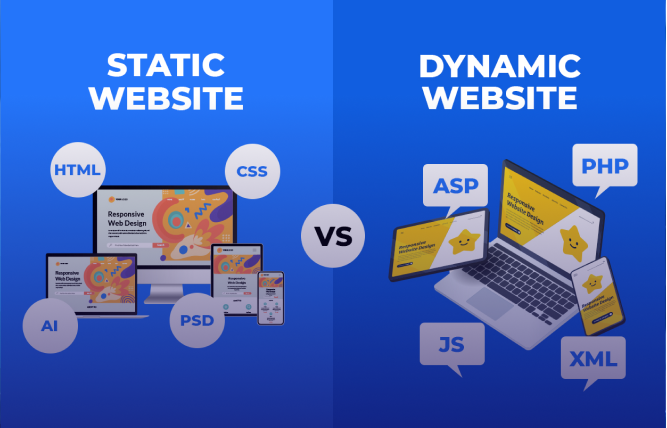Introduction
This blog compares Node.js vs Next.js, detailing their core concepts, features, use cases, and performance. It helps you decide the best fit for your project and suggests consulting FuturByte’s experts for the best advice.
Choosing between Node.js and Next.js can be a challenging decision. You need to first understand that Node.js is an open-source server-side runtime environment that extends the use of JavaScript from the browser.
On the other hand, Next.js is a framework that relies on React and is used to create server-rendered and static web applications that offer improved performance and SEO benefits.
The best decision for your web development project is completely based on personal preference. Specifically, it depends on what your project entails with regard to size, complexity, and documentation needs. However, the decision can often affect the success of the project, the time for its development, and the possible scalability. Therefore, seeking guidance from Node.js and Next.js development experts is suggested.
Based on a survey conducted by Stack Overflow in 2023, Node.js continues to be a preferred and popular framework for developers. In the meantime, Next.js has quickly become popular for effortlessly creating contemporary web applications.
Do you want to create the best contemporary web applications for your business? Contact FuturByte. We are a reputed web development company that will be of immense aid to you.
Let’s explore the distinct features of each of these frameworks and how they can enhance your project.

Node.js vs Next.js: An In-Depth Analysis
| Feature/Aspect | Node.js | Next.js |
| Type | Runtime environment for executing JavaScript code server-side. | Framework for building server-rendered React applications. |
| Core Concept | Asynchronous, event-driven architecture. | Server-Side Rendering (SSR) and Static Site Generation (SSG). |
| Primary Use | Backend development, APIs, and microservices. | Building full-stack web applications with React. |
| Performance | High performance due to non-blocking I/O. | Optimised performance through SSR and SSG. |
| Scalability | Easily handles multiple concurrent connections. | Efficient handling of both static and dynamic content. |
| Development Language | JavaScript | JavaScript and React |
| Ease of Learning | Moderate (JavaScript knowledge required). | Moderate (React knowledge required). |
| Tooling and Libraries | Rich ecosystem with npm. | Integrated with various tools for React development. |
| Community and Support | Large and active community, extensive resources. | Growing community with strong support from Vercel. |
| Popular Use Cases | Real-time applications, APIs, SPAs, microservices. | E-commerce, blogs, static websites, hybrid apps. |
| Setup and Configuration | Requires manual setup and configuration. | Simple and straightforward setup with built-in configurations. |
| Rendering | Server-side only. | Server-side and static site generation. |
| Code Splitting | Manual via libraries. | Automatic code splitting for optimised loading. |
| Image Optimisation | Requires additional tools or libraries. | Built-in image optimisation feature. |
| Routing | Manual routing setup. | File-based routing system. |
| Internationalisation (i18n) | Requires additional configuration or libraries. | Built-in support for internationalisation. |
Core Concepts Behind Node.js
Node.js created Node.js in 2009 by utilising Google Chrome’s V8 JavaScript engine. It is built on an event-driven, non-blocking I/O model, which makes it efficient and scalable for handling numerous simultaneous connections.
Node.js efficiently manages several connections at once using a single-threaded, event-driven architecture. Its non-blocking I/O model efficiently handles multiple operations simultaneously, boosting performance and maximising resource usage.
Do you want to know how Node.js can benefit your business? Contact FuturByte. We are a reputed ecommerce development company that can offer you excellent advice on the matter.
Key Features of Node.js
- js manages non-blocking I/O tasks, allowing it to handle numerous requests simultaneously without needing to wait for any individual request to complete. This results in quicker completion and improved results.
- js, utilising the V8 engine, translates JavaScript into machine code, resulting in quicker performance compared to conventional server-side languages.
- The event-driven design of Node.js allows it to manage numerous simultaneous connections efficiently.
- The Node Package Manager (npm) provides developers access to numerous reusable libraries and modules, making development easier.
- The utilisation of a Single Programming Language enables developers to use JavaScript for both client-side and server-side development. It encourages uniformity and minimises the need for switching contexts.
Popular Use Cases for Node.js
Node.js is versatile and suitable for various applications, including:
- Applications that require instantaneous communication, such as chat apps, online gaming, and live-streaming services.
- js is highly proficient in creating RESTful APIs and microservices because of its lightweight and efficient characteristics.
- It is best for single-page applications (SPAs) as it is combined with front-end frameworks like React or Angular to create dynamic SPAs.
- Various Custom Web Design and Development uses Node.js to create bespoke solutions tailored to client needs.
Pros and Cons of Node.js
| Pros | Cons |
Fast performance (V8 engine) | Callback hell (complex asynchronous code) |
High scalability (handles many connections) | Single-threaded (CPU-intensive tasks can block) |
Single programming language (JavaScript) | Less mature libraries compared to some ecosystems |
Rich ecosystem (npm) | Learning curve for non-JavaScript developers |
Real-World Examples of Applications Built on Node.js
Node.js has been serving as the foundation for many popular and powerful web applications you might use every day! Here are some real-world examples to showcase its versatility:
Netflix – The biggest streaming service in the world, uses Node.js for different purposes, such as real-time recommendation systems and personalisation functions.
PayPal – A renowned online payment system worldwide, uses Node.js for its efficient and expandable backend structure to manage numerous transactions smoothly.
Uber – It depends on Node.js for effective request routing between drivers and riders and live location tracking.
LinkedIn – It relies on Node.js for its dynamic content updates and efficient communication features.
Medium – The blogging platform, which is popular around the world, utilises Node.js to manage its content and interact with its users.
Do you want to know how at least one of these applications can serve your business interests? Contact FuturByte. We are a reputed WooCommerce web developer that will offer you great advice based on your unique case.
Core Concepts Behind Next.js
Next.js is a popular open-source framework for building server-rendered React applications. Created by Vercel (formerly ZEIT). Next.js is built on top of React and incorporates several core concepts that distinguish it from other frameworks:
- Server-Side Rendering (SSR): Next.js can render React components on the server before sending them to the client.
- Static Site Generation (SSG): Next.js supports generating static HTML at build time, which can be served to clients with minimal server-side processing.
- API Routes: Next.js allows developers to create API endpoints within the application, enabling the integration of server-side functionality without needing a separate backend.
- Automatic Code Splitting: It automatically splits the code into smaller bundles, ensuring that only the necessary code is loaded for each page, enhancing performance.
- File-Based Routing: The framework uses a file-based routing system, where the file structure of the project determines the routes, making it intuitive and easy to manage.
Next.js allows developers to build static websites, dynamic web applications, and hybrid static and server-side rendered applications with ease.
Key Features of Next.js
- Ease of Setup: Next.js provides a simple and straightforward setup process, enabling developers to get started quickly.
- Optimised Performance: By default, Next.js optimises performance through automatic code splitting, server-side rendering, and static site generation.
- Built-in CSS and Sass Support: Next.js includes built-in support for CSS and Sass, allowing developers to style their applications without additional configuration.
- Image Optimisation: The framework includes an image optimisation component that automatically optimises images for faster loading times and better performance.
- Internationalisation (i18n): Next.js offers built-in support for internationalisation, enabling developers to create applications that support multiple languages.
Popular Use Cases for Next.js
Next.js is versatile and suitable for a wide range of applications, including:
- E-commerce Websites: Next.js’s SEO optimisation and performance optimisation features make it a preferred option for e-commerce platforms, assuring fast load times and high visibility in search engine results.
- Marketing Websites: Businesses often use Next.js for marketing sites due to its ability to generate static pages, enhancing SEO and load times.
- Custom Website Development: Custom web development services providers frequently use Next.js to create bespoke, high-performance web applications tailored to client needs.
- Progressive Web Apps (PWAs): As a PWA development company, Next.js helps create reliable and super-fast web applications that work across different devices.
- CMS Development Services: Next.js integrates well with headless CMSs, making it a popular choice for CMS development services that require flexibility and performance.
Do you want to make the best possible use of Next.js? Contact FuturByte. We are a famed business management solutions provider that can also help you with Next.js.
Pros and Cons of Next.js
| Pros | Cons |
SEO-friendly (SSR and SSG) | Learning curve (React and SSR concepts) |
Optimised performance (code splitting, image optimisation) | Time-consuming builds for large sites |
Easy setup and configuration | Server-side overhead (SSR adds complexity) |
Excellent developer experience (hot-reloading) | Limited to React framework |
Real-World Examples of Applications Built on Next.js
Next.js is the backbone of some impressive and user-friendly web applications you might encounter daily. Here are a few examples that showcase its capabilities:
Hulu – This popular streaming platform leverages Next.js for its user interface, ensuring a smooth and responsive browsing experience.
TikTok – The globally renowned short-form video platform utilises Next.js for its dynamic content rendering and efficient user interactions.
Netflix – While Netflix utilises Node.js for various functionalities, parts of its user interface, particularly landing pages and informational sections, are built with Next.js for optimal performance.
Uber Eats – The food delivery giant leverages Next.js for its user-facing interfaces, ensuring a fast and seamless experience when browsing restaurants and placing orders.
Twitch – The interactive live streaming platform utilises Next.js for its front-end components, contributing to a smooth and engaging experience for viewers and streamers.
Do you want your app to be as user-friendly as the above ones? Contact FuturByte. We are a world-renowned Joomla web developer that will give you the best possible (and user-friendly) app for your business.
Next.js vs Node.js: Comparing Performance
When comparing the performance of Node.js and Next.js, it’s essential to understand their different use cases and how each framework optimises for its specific tasks.
Node.js Performance
- Non-blocking I/O: Node.js’s event-driven, non-blocking I/O model enables it to handle multiple connections concurrently without waiting for any operation to be completed.
- Single-threaded but scalable: Despite being single-threaded, Node.js can manage numerous connections thanks to its asynchronous nature. However, CPU-intensive tasks can still pose challenges.
- Lightweight and fast: Node.js is built on the V8 JavaScript engine, providing high-speed execution and minimal overhead.
Next.js Performance
- Server-Side Rendering (SSR): Next.js generates HTML on the server, ensuring faster initial load times and improved SEO. This can reduce time-to-interactive for users.
- Static Site Generation (SSG): By generating static HTML at build time, Next.js serves pages with minimal server-side processing, enhancing performance for static content.
- Automatic Code Splitting: Next.js automatically splits the code, ensuring that only the necessary JavaScript is loaded for each page, reducing load times and improving performance.
- Built-in Optimisations: Next.js includes image optimisation and other performance enhancements that are out of the box, ensuring better loading speeds and user experiences.
Do you want further information regarding this comparison or how these platforms can benefit your business? Contact FuturByte. We are a famed custom website solutions provider who will give you excellent information here.
Downsides of Node.js
- Callback Hell: Asynchronous programming can lead to complex and hard-to-manage code.
- Single-Threaded Limitations: CPU-intensive tasks can block the event loop, impacting performance.
- Less Mature Libraries: Some libraries in the Node.js ecosystem may not be as mature as those in other languages.
- Learning Curve: Developers not familiar with JavaScript may find it challenging to adopt.
Downsides of Next.js
- Learning Curve: Requires knowledge of both React and server-side rendering concepts.
- Build Times: Static generation can be time-consuming for very large sites.
- Server-Side Overhead: SSR adds extra overhead compared to purely static sites.
- React Dependency: Only works with the React framework, limiting flexibility if other front-end frameworks are preferred.
The Best Between Node.js vs Next.js
Choosing between Node.js and Next.js depends on your project’s requirements:
Choose Node.js if
- You need a backend server to handle high I/O operations, such as real-time applications, APIs, or microservices.
- You are looking to build a scalable and efficient server-side application.
- Your team is proficient in JavaScript and needs a fast, event-driven environment.
Choose Next.js if
- You are building a full-stack web application where performance and SEO are priorities.
- You need static site generation capabilities or server-side rendering.
- You are developing with React and want a framework that simplifies setup and optimises performance.
Consulting Experts to Choose the Best Fit
When deciding between Node.js and Next.js, consulting with experts can provide valuable insights. A custom website development company or a PWA development company can help assess your project’s specific needs.
Consulting with experts ensures that you choose the right tool for your project’s success, considering factors such as scalability, performance, SEO, and development speed. Whether you go with Node.js for its back-end capabilities or Next.js for its front-end and full-stack strengths, expert advice can help you make an informed decision.
Conclusion
In the debate of Node.js vs Next.js, the best choice ultimately depends on your project’s specific needs and goals. Both frameworks offer unique advantages and are suited to different aspects of web development.
Node.js shines as a powerful, efficient, and scalable runtime environment ideal for backend development. The non-blocking and event-driven architecture makes it perfect for real-time applications, APIs, and microservices. Companies like Netflix, LinkedIn, and Uber have leveraged Node.js to build vigorous and high-performing applications.
Next.js, on the other hand, is a React-based framework tailored for building modern web applications with excellent performance and SEO capabilities. Its support for server-side rendering (SSR) and static site generation (SSG) makes it a top choice for e-commerce sites, marketing websites, blogs, and other content-heavy platforms. Major players like Hulu, TikTok, and GitHub utilise Next.js to deliver fast, SEO-friendly, and user-centric web experiences.
When deciding between Node.js and Next.js, consider the following:
- Use Node.js if you need a strong backend solution that handles high I/O operations efficiently or if you’re focusing on real-time applications and microservices.
- Use Next.js if you require a full-stack solution that emphasises performance, SEO, and seamless user experiences, especially for React-based projects.
To make the best decision, consulting with experts in custom web design and development, CMS development services, and other specialised areas can provide invaluable guidance. The professionals can help align your project requirements with the most suitable technology stack, ensuring the success and scalability of your application.
Lastly, if you need clarifications regarding any of the points discussed in this blog, contact FuturByte. We are a renowned search engine optimization services provider that can offer you great informational assistance.
Frequently Asked Questions
FuturByte specialises in custom web design and development, offering expertise in both Node.js and Next.js.Our team of experienced developers can assess your project requirements, budget, and timeline to recommend the framework that best fits your specific needs.We prioritise performance, scalability, and SEO optimisation to ensure your web application’s success and long-term growth.
Node.js is generally more cost-effective for backend-focused applications due to its efficient handling of I/O operations. Next.js can be more cost-effective for full-stack applications requiring SEO optimisation and fast load times, thanks to its built-in SSR and SSG features.
The time to build applications with Node.js or Next.js depends on the project’s complexity. Simple Node.js applications can be built in a few weeks, while complex projects may take several months. Next.js projects typically follow similar timelines, but initial setup and SSR/SSG features may speed up development for complex, SEO-focused sites.
FuturByte offers custom PHP website development, mobile app development, WordPress website development, PWA development, POS software development, and CMS development services.
Have questions or feedback?
Get in touch with us and we‘l get back to you and help as soon as we can!




